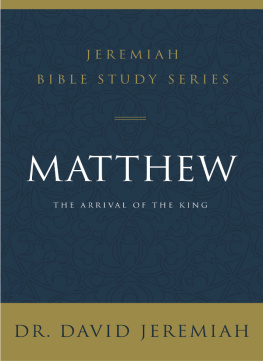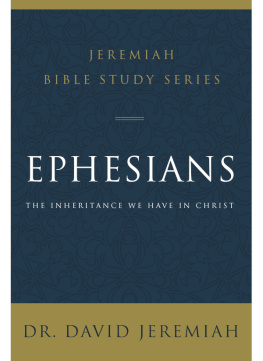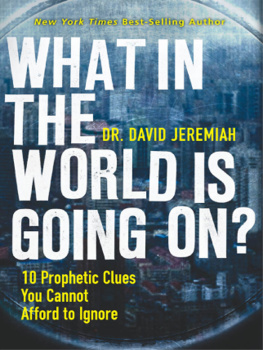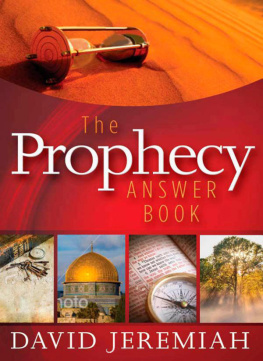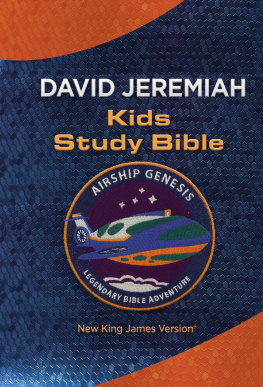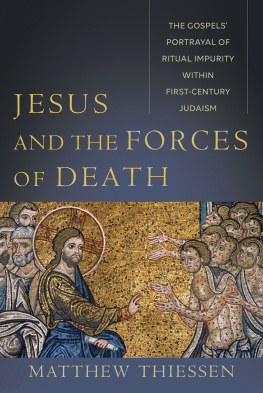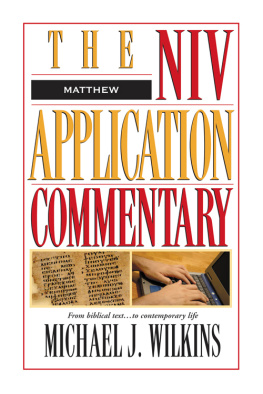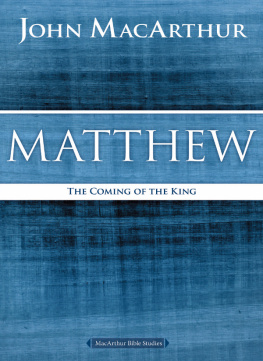David Jeremiah - Matthew: The Arrival of the King
Here you can read online David Jeremiah - Matthew: The Arrival of the King full text of the book (entire story) in english for free. Download pdf and epub, get meaning, cover and reviews about this ebook. year: 2019, publisher: HarperChristian Resources, genre: Detective and thriller. Description of the work, (preface) as well as reviews are available. Best literature library LitArk.com created for fans of good reading and offers a wide selection of genres:
Romance novel
Science fiction
Adventure
Detective
Science
History
Home and family
Prose
Art
Politics
Computer
Non-fiction
Religion
Business
Children
Humor
Choose a favorite category and find really read worthwhile books. Enjoy immersion in the world of imagination, feel the emotions of the characters or learn something new for yourself, make an fascinating discovery.
- Book:Matthew: The Arrival of the King
- Author:
- Publisher:HarperChristian Resources
- Genre:
- Year:2019
- Rating:4 / 5
- Favourites:Add to favourites
- Your mark:
Matthew: The Arrival of the King: summary, description and annotation
We offer to read an annotation, description, summary or preface (depends on what the author of the book "Matthew: The Arrival of the King" wrote himself). If you haven't found the necessary information about the book — write in the comments, we will try to find it.
Jesus is the eternal King...
Follow Dr. Jeremiah through the gospel of Matthew in a chapter-by-chapter study that will help you understand whatit meant to the people at the time it was written, and what it means to Christians today.
At first glance, it seems surprising that Jesus would call a man like Matthew to become one of His disciples. As a small-time tax collector, Matthew would have been despised by the Jewish people, who viewed those in the profession as traitors to Rome. But the fact that Matthew was educated, literate, and also familiar with Jewish law and customs made him the ideal candidate to not only accompany Jesus during His earthly ministry but also record all that he witnessed.
The result is the Gospel we have today. Matthew shows how Jesus, as the promised Messiah and eternal King, is worthy of our hope and our complete devotion.
Each of this studys twelve lessons is clearly organized to include:
ABOUT THE SERIES
The Jeremiah Bible Study Series captures Dr. David Jeremiahs forty-plus years of commitment in teaching the Word of God. In each study, youll gain insights into the text, identify key stories and themes, and be challenged to apply the truths you uncover to your life. By the end of each study, youll come away with a clear and memorable understanding of that Bible book.
Each study also contains a Leaders Guide.
David Jeremiah: author's other books
Who wrote Matthew: The Arrival of the King? Find out the surname, the name of the author of the book and a list of all author's works by series.

